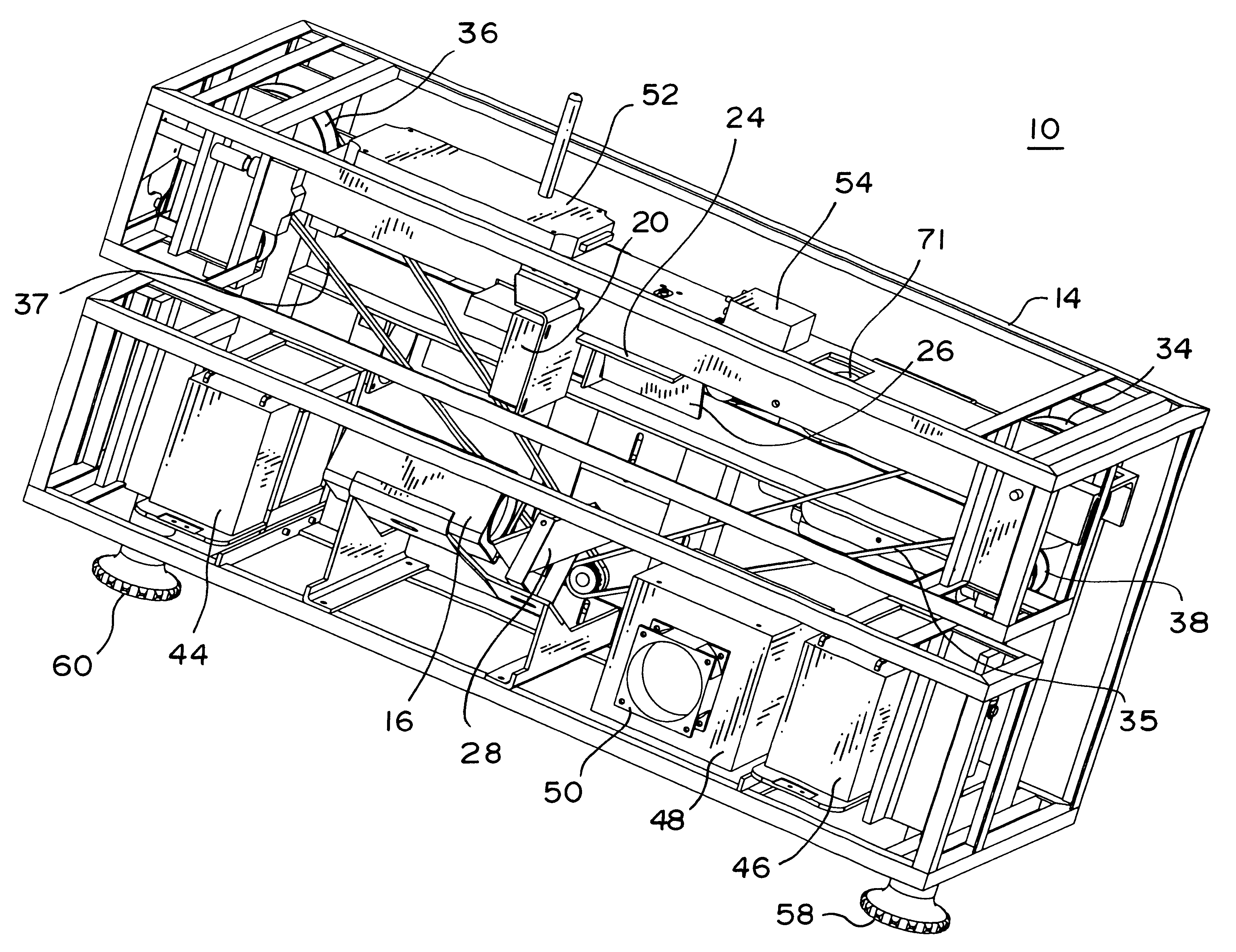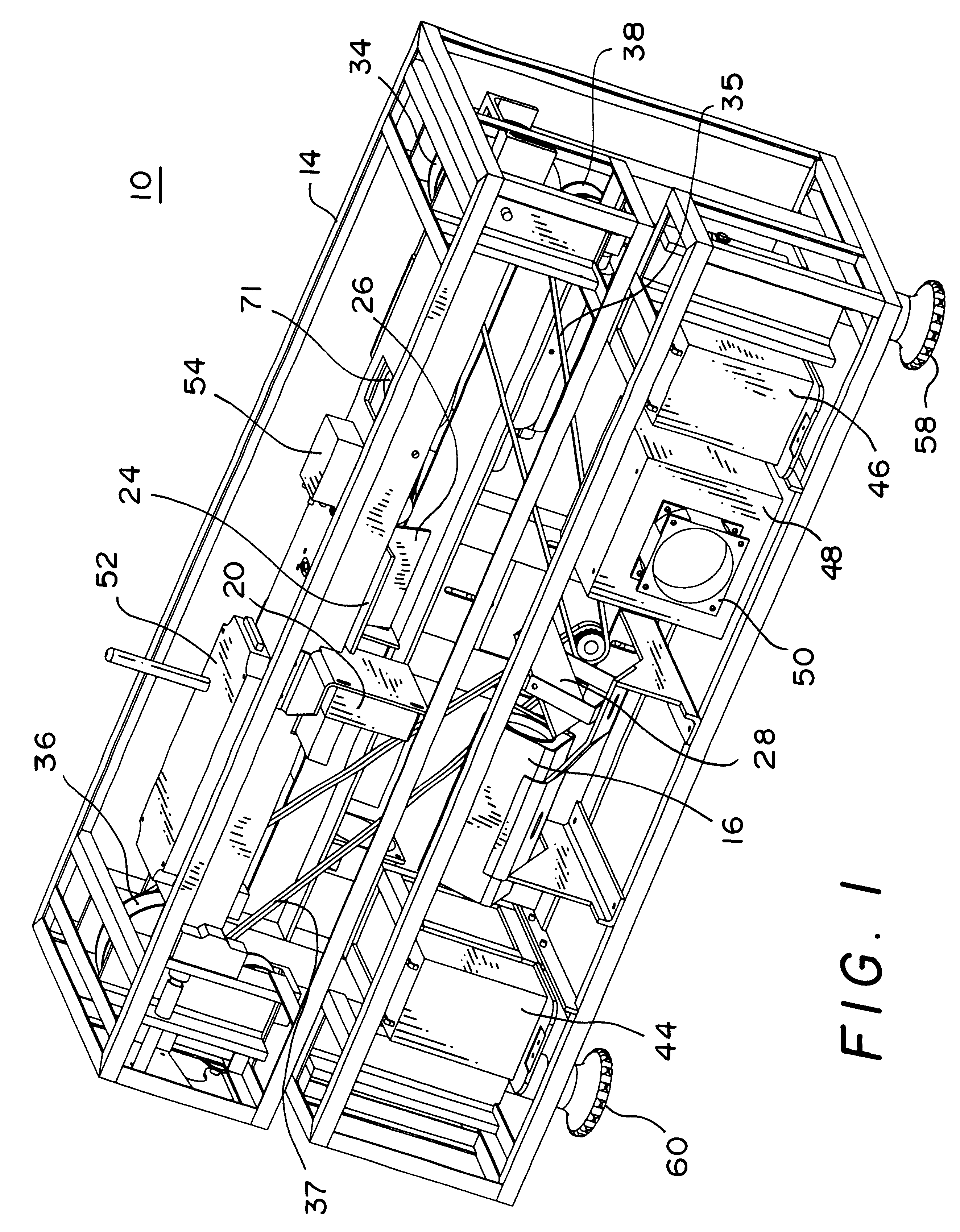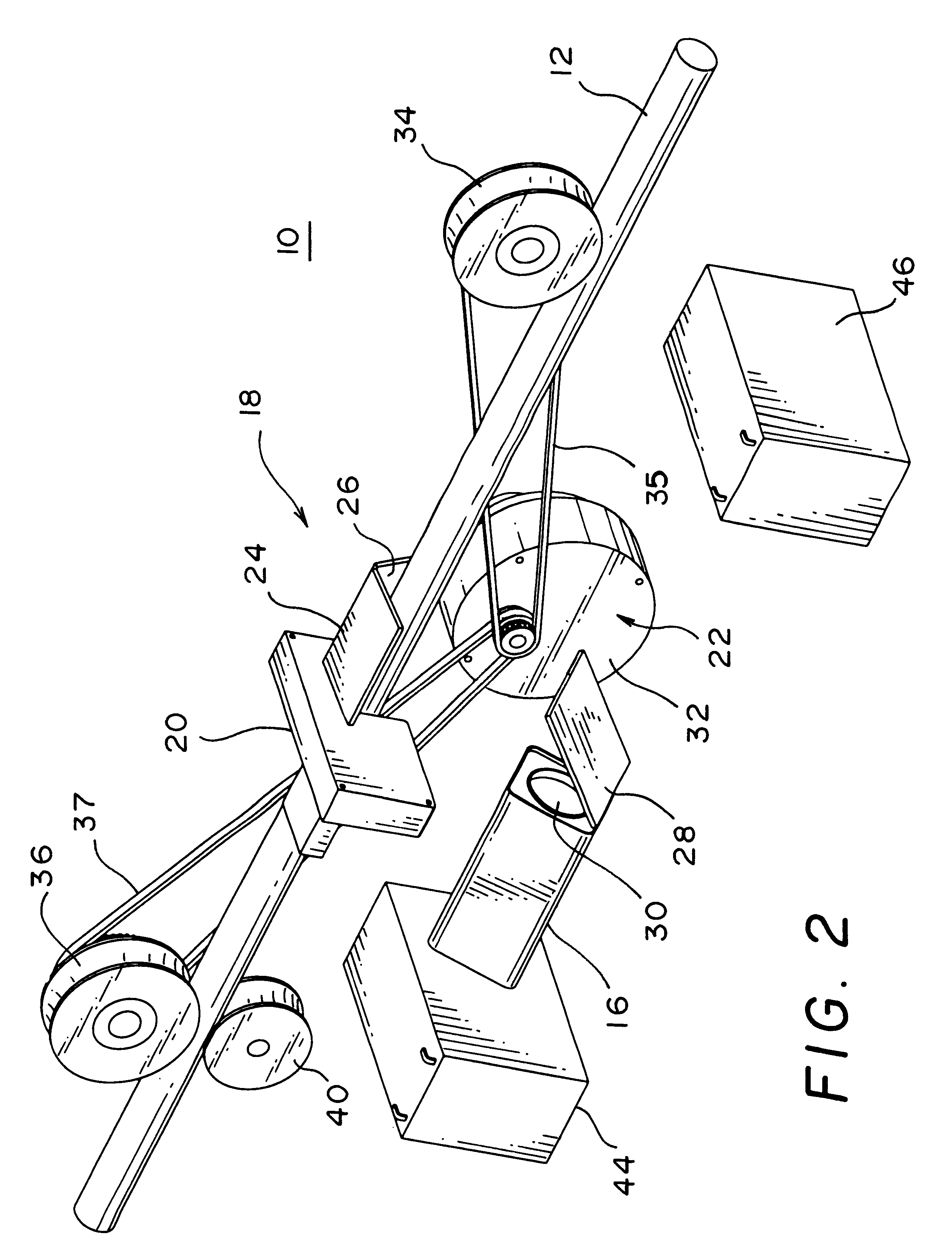Cable and line inspection mechanism
a technology of cable and line, applied in the field of automatic mechanisms, can solve problems such as bird caging, failure of cable, frayed or jammed strands,
- Summary
- Abstract
- Description
- Claims
- Application Information
AI Technical Summary
Benefits of technology
Problems solved by technology
Method used
Image
Examples
Embodiment Construction
With reference to FIGS. 1-5, a cable and line inspection mechanism (CLIM) 10 is illustrated for visually inspecting a cable or line 12 (see FIG. 2) in accordance with a preferred embodiment of the present invention. The CLIM 10 includes a frame 14, to which are mounted, a number of elements. As best illustrated in the schematic illustration of FIG. 2, several of the key elements include a video camera 16, a mirror assembly 18, a laser micrometer 20 for measuring the diameter of the cable 12, and a drive system 22.
The mirror assembly 18 includes first and second mirrors 24 and 26 that are positioned adjacent to, and at an angle to, one another. A third mirror 28 is disposed adjacent a lens 30 of the video camera 16 at an angle thereto so that the camera 16 can be positioned parallel to a longitudinal axis of the cable 12 for packaging efficiency. It will be understood, however, that the third mirror could be left out if the camera 16 were positioned perpendicular to the cable 12. The...
PUM
 Login to View More
Login to View More Abstract
Description
Claims
Application Information
 Login to View More
Login to View More - R&D
- Intellectual Property
- Life Sciences
- Materials
- Tech Scout
- Unparalleled Data Quality
- Higher Quality Content
- 60% Fewer Hallucinations
Browse by: Latest US Patents, China's latest patents, Technical Efficacy Thesaurus, Application Domain, Technology Topic, Popular Technical Reports.
© 2025 PatSnap. All rights reserved.Legal|Privacy policy|Modern Slavery Act Transparency Statement|Sitemap|About US| Contact US: help@patsnap.com



